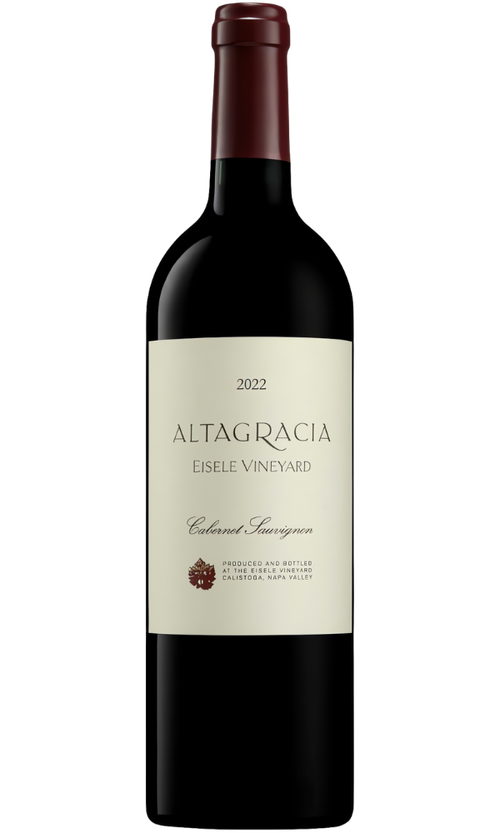
Cult-Cabernet Quality from an Icon

- Curated by unrivaled experts
- Choose your delivery date
- Temperature controlled shipping options
- Get credited back if a wine fails to impress
2022 Eisele Vineyard Altagracia Cabernet Sauvignon Napa Valley 750 ml
| $160 | per bottle | |
- Curated by unrivaled experts
- Choose your delivery date
- Temperature controlled shipping options
- Get credited back if a wine fails to impress
Eisele’s Bold Brother
Long before single-vineyard Cabs were commonplace, there was Eisele Vineyard. The site epitomizes why single-vineyard wines exist, because it offers a unique balance of elegance and power and stands alone in this part of the Valley for quality.
The alluvial volcanic soils fanning out from the base of the Vaca Palisades offer terrific drainage, which translates first into low yields and then into concentrated character in the glass. Former owner Bart Araujo (Altagracia is named for his grandmother) loved how wines from here offered “weight but without heaviness.”
In 1884 vines were planted here, but the modern era for the estate began in the 1960s, when Milt & Barbara Eisele purchased it, giving it their name, and converting it to Cabernet Sauvignon. The Eisele name would start appearing on Ridge bottles shortly thereafter, when Paul Draper made it just the third vineyard-designated Cabernet bottled in Napa.
Daphne and Bart Araujo made their name in the world of wine by the careful attention they gave to their farming and their wines. Tipped off about the estate by the founder of Screaming Eagle, it was the Araujos who converted the estate first to organic farming, then upped the ante again by integrating biodynamics. Today the Eisele Vineyard (as it is now called) is under the stewardship of Artémis Domaines, which also owns Château-Grillet, Clos de Tart, Domaine d’Eugénie, and Château Latour in France.
In the cellar, the barrel room is now temperature-controlled and the barriques are at a lower toast, so as to let the vineyard shine through. Lastly, taking a note out of Château Latour’s book, the new team leader (Hélène Mingot) does the blend before élevage rather than after.
You might also like these wines
- You're on page











